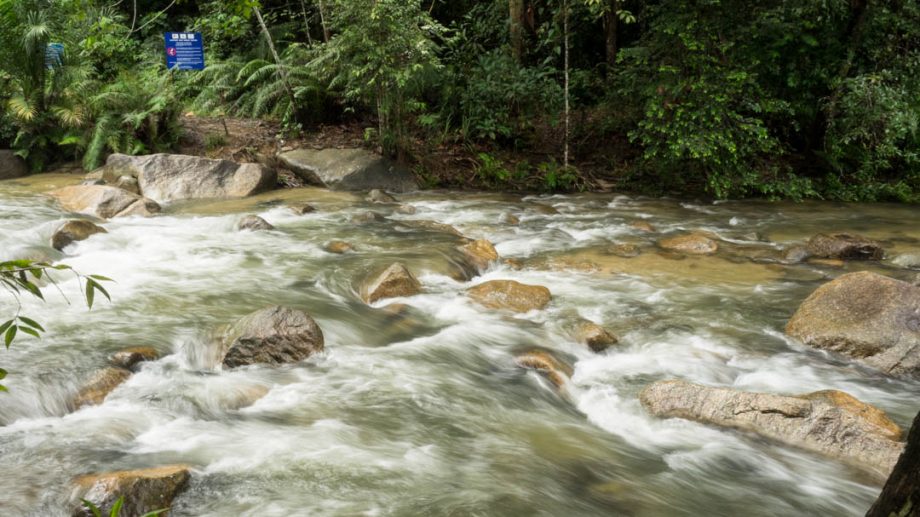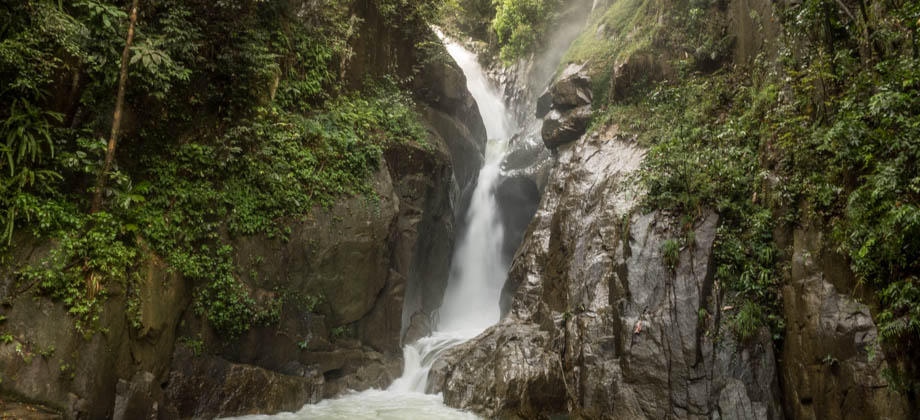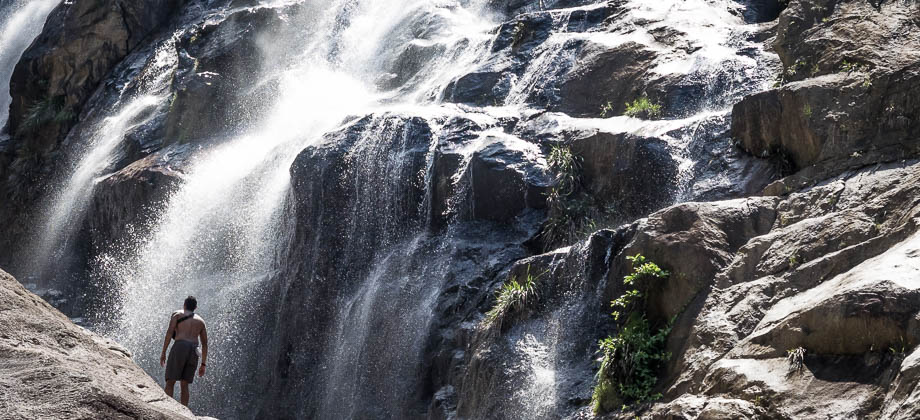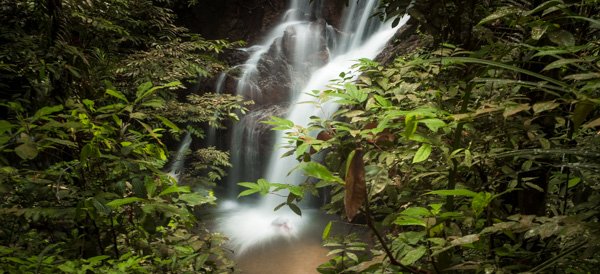Chiling Waterfall
Circinate Vernation
You will also see plenty of young fronds that are emerging in a process called 'circinate vernation'. These fronds are tightly coiled up in what are called 'fiddleheads' (referring to the top end of a violin), which is how the ferns protect the tender tip of the frond. As the parts that have already emerged expand and photosynthesize, they toughen up and help to expand the rest of the frond.



River Crossings
At the 1.2 km mark, approximately half way in, you'll come upon a junction that has been blocked off. Taking the left turning here will bring you straight to the river and to your second river crossing, but this time without a bridge. All the crossings are marked with very large blue signs, so keep an eye out for them if you are uncertain where to cross.
When crossing rivers, please ensure that the waist strap of your backpack is undone just in case you are forced to ditch the bag. All the crossings here tend to be fairly straightforward as water levels generally do not surpass one's thighs, and thus can be navigated alone without group formations (such as 'line astern' or a 'group wedge'). This may not be the case however after heavy rain so please refrain from making river crossings in those conditions. Try to always make it a point to cross rivers at their widest points as the narrow points tend to have faster currents.

An extra form of support such as a stick or a walking pole can help immensely with your balance when crossing rivers. Try to face upstream diagonally, and lean forward slightly into the stick/pole. When moving, move a little bit at a time and shuffle your feet forward so that one foot stops downstream of the other. This narrows your profile and reduces the build up of water pressure. Try to also keep your footwear on as injuries can occur out of nowhere (I once had to treat a dislocated toe that got wedged between rocks).
If you do fall and cannot immediately regain control, consider removing the bag as it could push you under. Face downstream as quickly as you can and begin defensive swimming by raising your feet to protect yourself from oncoming rocks. Keep your back straight to ensure your bum does not bump on submerged rocks but your neck bent so that you can see where you are going.





